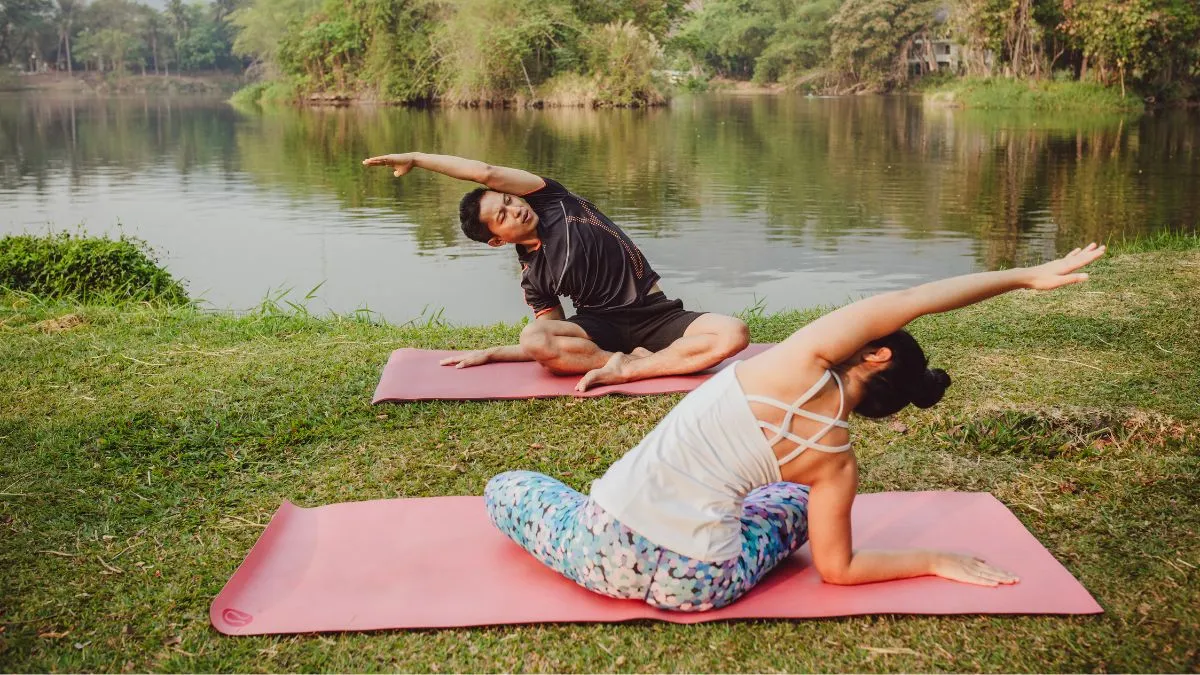
The nip in the air indicates the onset of winter. The shortening daylight is a reminder for us to slow down and reconnect with ourselves. When seasons change, our mind and body require some time off to prepare for the new weather. In Ayurveda, it is believed that every season carries its own energy and rhythm, and our bodies respond to these natural shifts. Seasonal Flow Yoga is one of the best ways to prepare ourselves for the season to come. With winters arriving, practising seasonal flow yoga will help us transition from autumn to winter.
According to Ayurveda, winter is dominated by Vata and Kapha doshas, representing air, space, and earth elements. These are believed to cause dryness, sluggishness, and stiffness.
“To balance these doshas, our yoga practice needs to be rhythmic and flexible. It should focus on warmth, stability and promoting circulation,” shares Yoga Guru and Founder of Patanjali, Baba Ramdev.
Why Practise Seasonal Flow Yoga Before Winter
As we are heading towards cooler temperatures, we are highly likely to experience joint stiffness, muscle soreness and weak immunity. A seasonal flow yoga will offer these benefits:
- Improved blood circulation.
- Better immunity by stimulating the lymphatic system
- Enhanced lung capacity to combat respiratory issues common in cold weather
- Uplifted mood and reduced seasonal anxiety or low energy
- Increased mental resilience and emotional steadiness through mindful movement and breathwork
By starting early, ideally in late autumn, we allow the body to adapt naturally and remain strong throughout the season.
Also Read: Morning Yoga Flow: Asanas for an Energising Start to Your Day
Seasonal Flow Yoga For Winters
A winter-prep yoga practice should consist of these key aspects:
Gentle Warm-ups
Begin with slow joint movements, including ankles, wrists, shoulders, and neck, to release tension. Incorporate Sun Salutations (Surya Namaskar) and Cat-Cow stretches to gently raise body temperature and activate blood circulation.
Dynamic Standing Poses
Yoga poses like Warrior II (Virabhadrasana II), Chair Pose (Utkatasana), and Triangle Pose (Trikonasana) are easy and effective in increasing body temperature, building endurance and achieving stability. These yoga asanas strengthen legs and core muscles to stay warm even in harsh winter weather.
Also Read: 7 Yoga Practices To Fight Infections And Promote Well-Being In Monsoons
Balancing and Twisting Asanas
Tree Pose (Vrikshasana) and Eagle Pose (Garudasana) are known to improve focus. On the other hand, yoga asana like Revolved Chair Pose (Parivrtta Utkatasana) helps in stimulating digestion and eliminating toxins from the body.
Heart-Opening Poses
Since winter can often bring feelings of lethargy or emotional heaviness, you must include poses like Bridge Pose (Setu Bandhasana), Cobra (Bhujangasana) and Camel Pose (Ustrasana). These help in improving lung and breathing capacity.
Relaxation Poses
End your seasonal yoga flow with calming postures such as Child’s Pose (Balasana) and Legs-Up-the-Wall (Viparita Karani). These promote relaxation, prepare the body for rest mode and balance the nervous system. End the session with Corpse Pose (Shavasana), which helps in absorbing all the benefits of the entire yoga session.
Breathwork and Mindfulness Practices
Apart from the yoga asanas mentioned above, you must also perform breathing exercises. The two must-include pranayamas are Kapalabhati and Nadi Shodhana. These not only clear sinuses but also reduce seasonal anxiety. Additionally, these help in promoting emotional and psychological well-being.
Final Word
The winter season calls for a slowdown. To prepare for the colder months, it is important that we focus on a yoga routine that ignites internal warmth, stability and grounding. This not only helps in boosting physical strength but also brings mental resilience and emotional stability.
Also watch this video
FAQ
What is the seasonal flow yoga?
Seasonal flow yoga is a balanced style which is designed specifically for seasonal change. This helps the body prepare for the weather.Which pranayama is beneficial in winter season?
While all pranayamas are good for every season, Kapalbhati pranayama, in particular, is a must for winters as it generates internal heat to keep the body warm.
How we keep this article up to date:
We work with experts and keep a close eye on the latest in health and wellness. Whenever there is a new research or helpful information, we update our articles with accurate and useful advice.
Current Version
Oct 17, 2025 15:20 IST
Published By : Chanchal Sengar